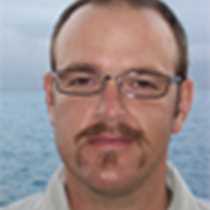Santa Cruz Island
It is incredible to think that Santa Cruz, our second largest island, was not officially colonized until the 1920’s. This island holds a grand diversity of flora and fauna, from the arid coastal environment to the lush highlands which are a hidden treasure here in Galápagos.
Today we started our expeditions on Santa Cruz at the Charles Darwin Research Station. This rustic scientific outpost has been partner to incredible research and conservation programs since the early 60’s. We landed at the National Park dock and proceeded to learn about the giant tortoise rearing in captivity program that has brought some populations up from almost certain extinction. Watching small tortoises that weigh 3-4 pounds it was hard to imagine them reaching over 600 lbs. Every happy story has a counterpoint and all were introduced to the sad history of invasive species and their destructive past. It is refreshing to see such positive action happening for the recuperation of this unique creature.
As we finished our visit to the Station we were able to spot Lonesome George who is the “spokestortoise” for the tortoise recuperation program. George is the last from his island of Pinta and has been present at the Charles Darwin Station since the late seventies while the world has been searched for a fellow Pinta tortoise that may have been taken away alive years in the past. Our final encounter was a close-up visit with large male tortoises from various islands that seemed to be as curious with us as we were with them. Strolling down Charles Darwin Ave. we eventually arrived at the waterfront where our buses to the highlands of Santa Cruz awaited us.
The arid lowlands give way to the lush highlands and all were surprised at this drastic change of environment. Before our lunch we entered a lava tunnel that showed us the inner workings of violent volcanic eruption. Just under a kilometer later we arrived at the foot of the restaurant where we had a hearty barbeque lunch and were treated to an incredible view of the lowlands and the distant islands in the archipelago.
After lunch we went deeper in our exploration and found seven wild tortoises from the Santa Cruz population. These tortoises range from 25 to an unknown age and move among the grasslands with a distinct direction that they only know.
From our ancient residents to the largest sunflower representatives in a cloud forest, we have accomplished something very special today, making a connection with nature that is impossible to describe nor explain. The hues of magenta, blue, and crisp grey lay way to a wonderful evening here in the Galápagos, I wonder what awaits us tomorrow.




